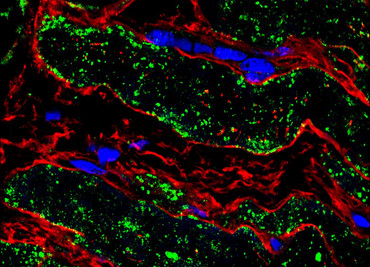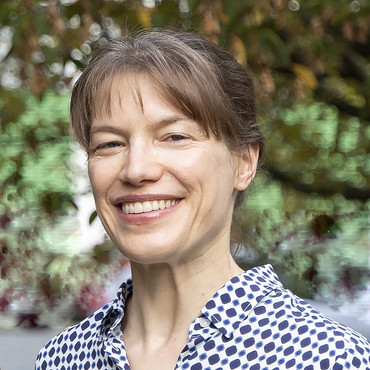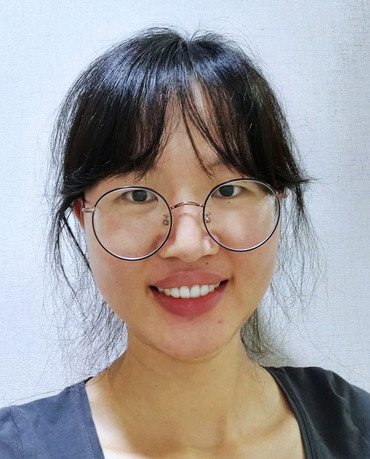UMG researchers discover potential new treatment for heart failure



(umg) According to the World Health Organization (WHO), around 27 percent of the world's population suffers from a severe iron deficiency, which often leads to anaemia. In anemia, the number of red blood cells is very low so that the blood cannot transport enough oxygen to the body. Patients with iron deficiency often suffer from exhaustion, weakness and paleness, including shortness of breath and chest pain. In patients with heart failure, iron deficiency exacerbates the symptoms and worsens the prognosis. Around 50 percent of heart failure patients have an iron deficiency due to a defect in iron absorption, circulation and excretion in the intestine. In addition to this, there are other mechanisms that ensure iron absorption in individual cells. However, these mechanisms in heart muscle cells, also known as cardiomyocytes, have so far been largely unknown.
At this point the researchers in Göttingen started. The group was led by Dr. Antje Ebert, last author of the study and leader of the "Cardiovascular Cell Biology and Systems Medicine" working group at the Heart Center of the University Medical Center Göttingen (UMG). The scientists discovered that patients with a pathological dilatation of the heart muscle (dilated cardiomyopathy) have an iron uptake defect. This defect affects iron uptake into the heart muscle cells and its processing as well as related metabolic processes, such as the energy supply to the cells. At the same time, the research group was able to show that the function of this defective transport pathway can be restored in three different ways: By administering additional iron, a special molecular compound that "repairs" the transport pathway, or with the help of gene editing (CRISPR-Cas), a procedure for the targeted modification of genes. The newly gained knowledge will now be used to research possible therapeutic approaches for affected patients. The results were published in July 2023 in the renowned journal "Circulation Research".
Original publication: An Alternative Mechanism of Subcellular Iron Uptake Deficiency in Cardiomyocytes. Yuanyuan Dai, Nadezda Ignatyeva, Hang Xu, Ruheen Wali, Karl Toischer, Sören Brandenburg , Christof Lenz , Julius Pronto , Funsho E. Fakuade , Samuel Sossalla , Elisabeth M. Zeisberg, Andreas Janshoff , Ingo Kutschka, Niels Voigt, Henning Urlaub, Torsten Bloch Rasmussen, Jens Mogensen, Stephan E. Lehnart , Gerd Hasenfuss, Antje Ebert. Circulation Research, July 7th 2023, DOI: 10.1161/CIRCRESAHA.122.321157
Iron transport in cardiac muscle cells
The most important pathway for iron uptake in cardiac muscle cells is clathrin-mediated endocytosis. This is a process in which essential substances - in this case iron - are transported into a cell. Cells are surrounded by a thin structure, the cell membrane, which separates the cell contents from the environment. During clathrin-mediated endocytosis, the cell membrane, together with the iron to be transported, invaginates into the interior of the cell. Clathrin is a protein that attaches to the invaginated membrane inside the cell and ensures that it is cut off from the membrane. This creates "bubbles", also known as vesicles, which transport the iron into the interior of the cell. This process plays a central role in the uptake of cholesterol, hormones, transport proteins, antibodies, toxins and viruses.
THE STUDY
"In order to better understand the mechanisms of iron uptake into the cells, we examined heart muscle cells grown from stem cells in the laboratory. Stem cells are cells that are able to divide in a special way and thus produce copies of themselves and other cells. They were previously obtained from blood samples of patients suffering from a hereditary form of pathological heart muscle dilatation. Therefore we are using a research model that is close to the patient. The defective iron uptake can be traced back to certain genetic changes, also known as mutations, that cause the disease," says Dr. Yuanyuan Dai, first author of the study. "Hereditary disease-causing mutations offer the opportunity to understand the molecular dysfunctions in heart muscle cells of patients with pathological heart muscle dilation. In addition, we examined patient tissue taken during heart surgery. It was important that we could also detect parts of the defective iron transport pathway in patients' tissues as a comparison," says Dr. Dai. Using a highly sensitive mass spectrometry method, the heart researchers in Göttingen analyzed the pathologically altered heart muscle cells and the heart tissue from patients with dilated cardiomyopathy. Thereafter, they determined the existing signaling pathways and protein functions within these cells. They identified the defect in clathrin-mediated endocytosis in the cells as a central aspect of the new disease mechanism. This was the case both in the heart muscle cells generated in the laboratory and in the heart tissue of patients.
"The correction of the hereditary defect in the laboratory-produced heart muscle cells was achieved by targeted modification of the genetic material through gene editing (CRISPR/Cas). Furthermore, treatment with a specific molecule, Rho activator II, or the administration of a larger amount of iron was able to rescue the transport pathway or restore clathrin-mediated endocytosis and the normal function of the heart muscle cells," explains Dr. Ebert. "Together with my colleagues from the UMG, Prof. Dr. Ingo Kutschka, Director of the Department of Cardiothoracic and Vascular Surgery, and Prof. Dr. Niels Voigt, Deputy Head of the Institute of Pharmacology and Toxicology, we were also able to confirm this result in another important, patient-specific model: In isolated living heart muscle cells from adult patients, we were also able to detect the defective transport pathway and improve its function by administering the molecular compound Rho activator II. We are now planning the further investigation of this disease mechanism, which could provide new therapeutic approaches for adult patients with hereditary dilated cardiomyopathy and contribute to the risk management of this disease," Dr. Ebert continues.
"I am delighted about the publication of the study by Dr. Antje Ebert, who is carrying out important research work in Göttingen with her colleagues. With the new findings on the processes of iron uptake into the heart muscle cells and their malfunctions in dilated cardiomyopathy, new therapeutic approaches for those affected may become possible in the future," says Prof. Dr. Gerd Hasenfuß, Director of the Department of Cardiology and Pneumology and Chairman of the Heart Center of the University Medical Center Göttingen.
CONTACT
University Medical Center Göttingen, Georg-August-University
Heart Center, Working Group "Cardiovascular Cell Biology and Systems Medicine"
Dr. Antje Ebert
Phone 0551 / 39-66309
antje.ebert(at)med.uni-goettingen.de
herzzentrum.umg.eu